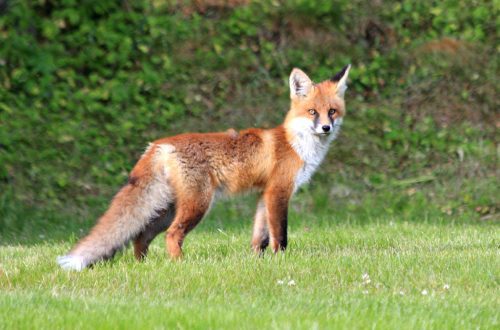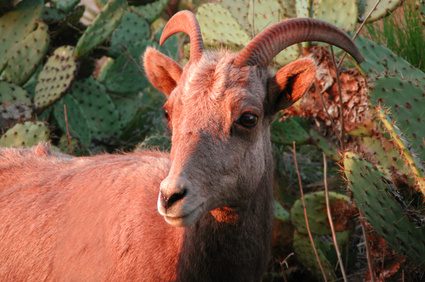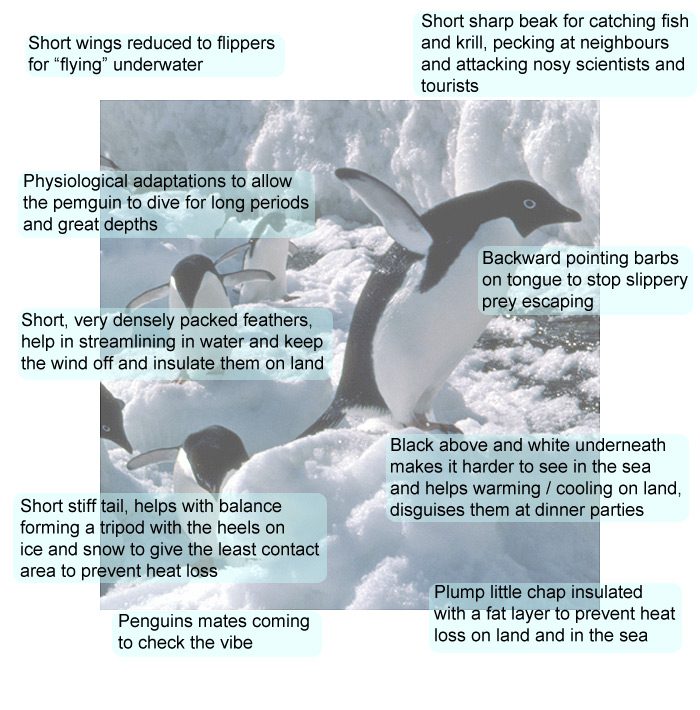
10 interesting facts about penguins – frost-resistant inhabitants of Antarctica
On the territory of Antarctica, amazing flightless birds – penguins have found their refuge. It is interesting that initially they were able to fly, but in the course of evolution they lost this ability. Now they know how to dive well and feel very good in the water.
These animals include 18 species, and they have something in common – they are all great swimmers and divers. The most famous of the species, the emperor penguin, is the largest and oldest bird of all. The penguin is very sociable and social; when hunting and nesting, it forms a flock.
Of course, such an animal as a penguin is of interest to many – you want to learn a lot about the bird. Let’s get on with it now! We suggest you familiarize yourself with the ten most interesting facts about penguins.
Contents
- 10 Killer whales are one of the main enemies
- 9. Keep established couples for life
- 8. Excellent fishermen
- 7. The number of nerve endings in the legs is minimal
- 6. Antonio Pigafett defined them as “strange geese”
- 5. Galapagos penguins do not live in polar latitudes
- 4. Golden-haired penguins are the most common
- 3. Papuan penguins are the fastest
- 2. Polar penguins are the most frost-resistant
- 1. Emperor penguins are the largest
10 Killer whales are one of the main enemies

Representatives of the animal world always have enemies, penguins are no exception. These charming birds actually have quite a few enemies: seagulls that can destroy their eggs and newborn chicks, fur seals and leopards, but killer whales pose the greatest danger to them.
As a rule, killer whales hunt large penguins, but it happens that they are not averse to feasting on adels. Some killer whales lie in wait for penguins on land, while others hunt them in the water. There is even such an interesting concept “penguin effect”, meaning fear of the water element.
9. Keep established couples for life
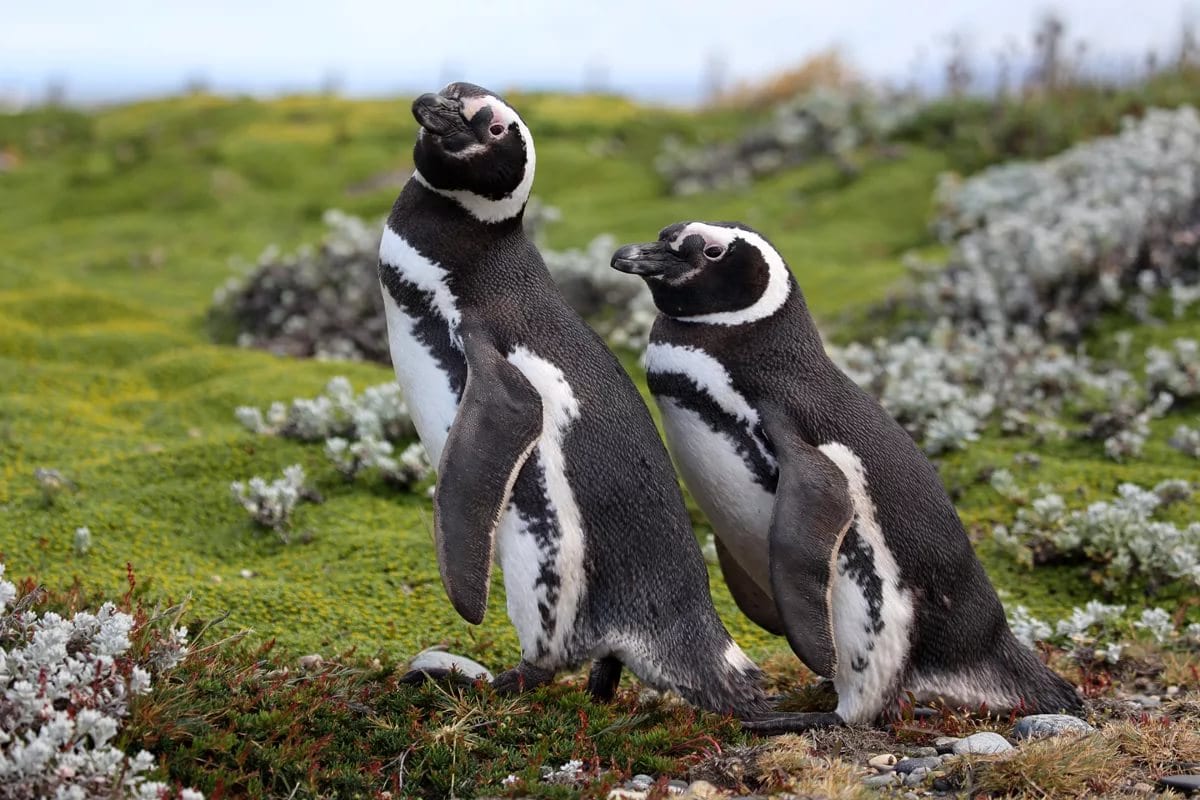
When it comes to monogamy, there are always arguments. Someone argues that monogamy in the animal world is nothing more than a fiction, it is unnatural, but animals show by their own example that it is possible.
Speaking of penguins, they form pairs for very long years. Scientists even conducted research, observed birds for 30 years using satellite tracking systems. It turned out that Magellanic penguins remain devoted to each other for many years, even despite the fact that during winter travel they have to be separated.
8. Excellent fishermen
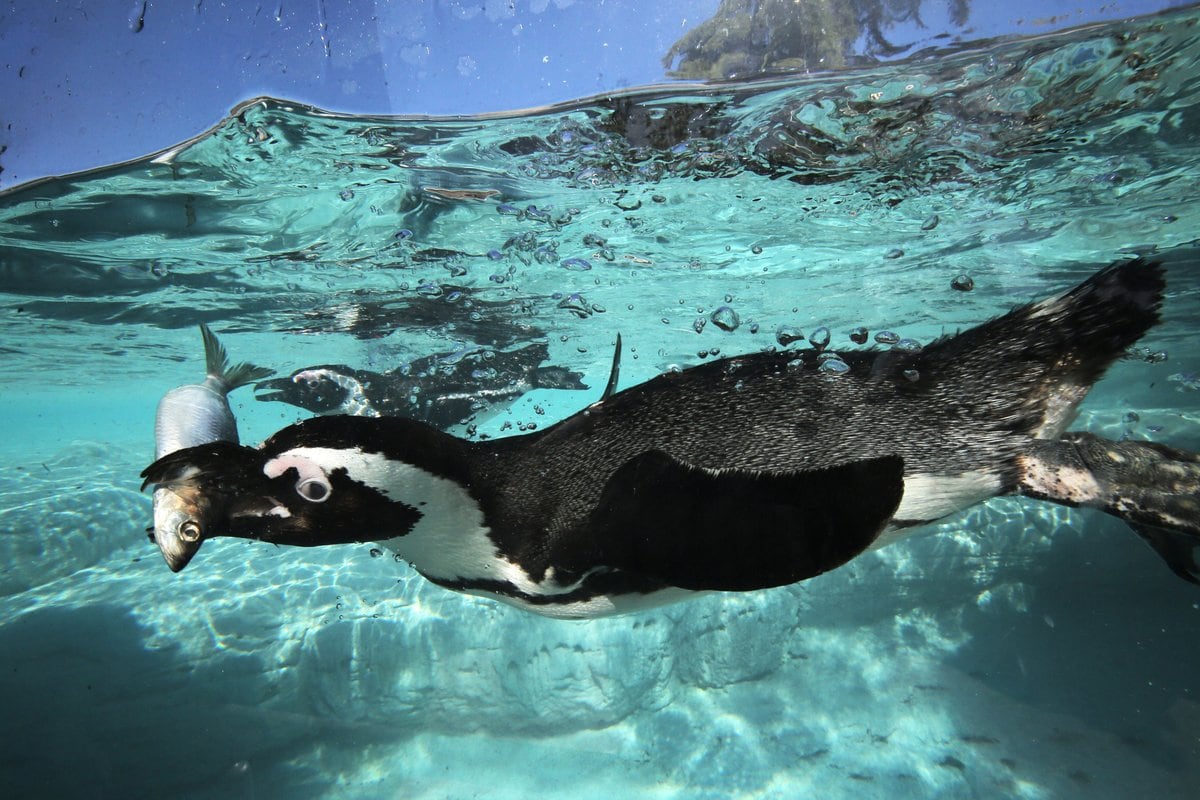
Many novice fishermen would do well to learn penguin dexterity! These birds eat a lot, their diet includes: squid, crabs, krill, of course, fish, and other sea creatures. Every day they absorb up to 1 kg. food (but this is during the summer months), and a third of the indicated amount in winter.
Penguins know how to get their own food, and they do it perfectly – diving into the water (and they are incomparable in the water element!) They catch fish, as well as other marine life. Remarkably, birds never feed on discards. Among the penguins, there are those who prefer to eat only fish.
7. The number of nerve endings in the legs is minimal
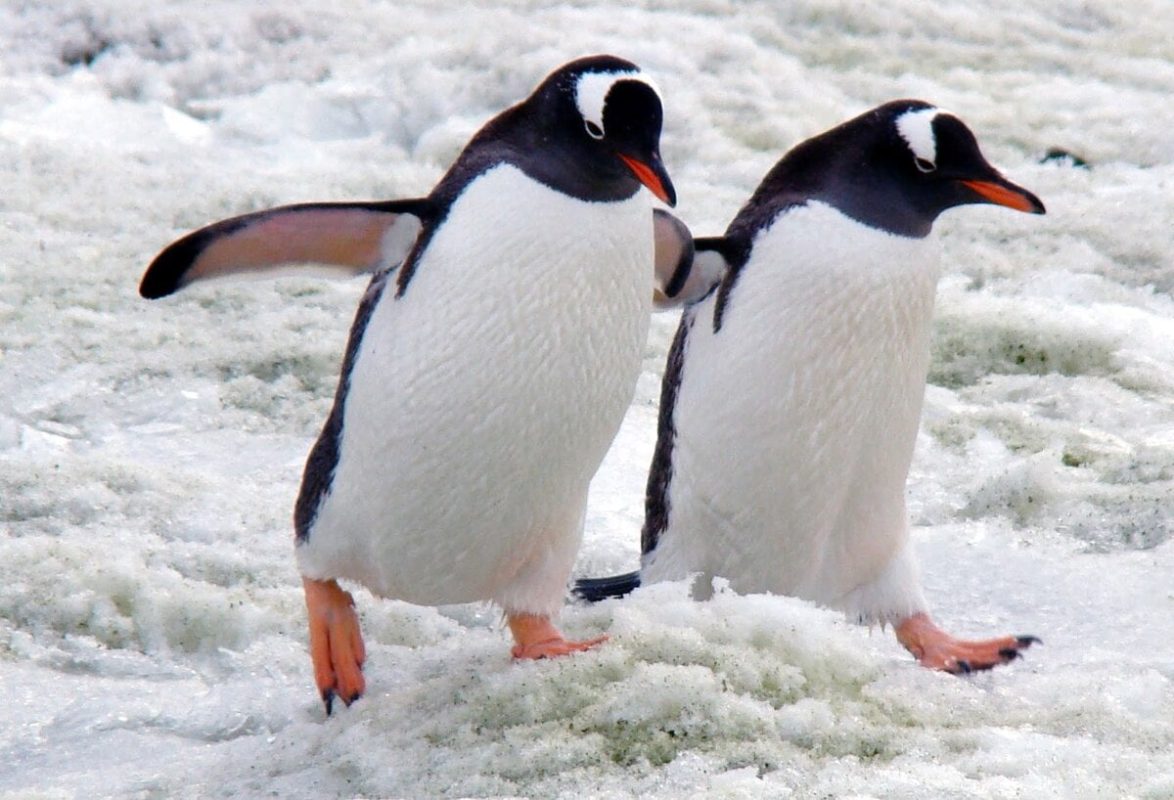
Have you ever wondered why penguins don’t freeze to ice? And more specifically, their paws? There is an explanation for this. The fact is that birds have a minimal number of nerve endings on their legs, and they are shaped like “flippers”.
In addition, penguins have heavier bones compared to other birds. By the way, their wings, resembling fins, allow birds to develop a maximum speed of movement under water – up to 11 km / h.
6. Antonio Pigafett defined them as “strange geese”
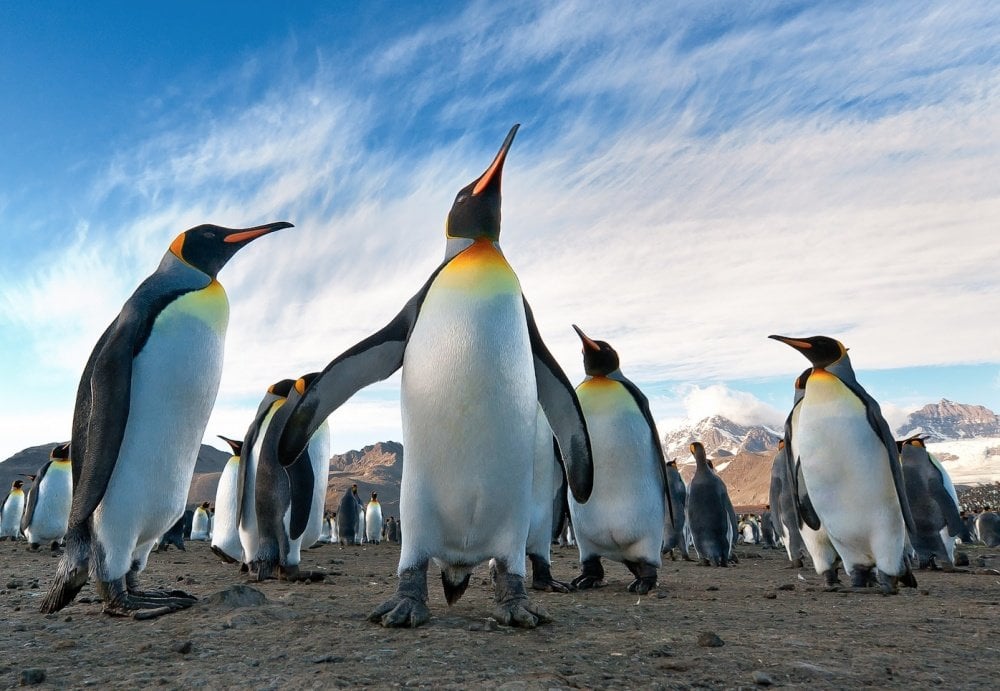
The Italian writer Antonio Pigafett (1492-1531) in 1520, after the expedition in which he accompanied Ferdinand Magellan, left interesting notes. He compared the penguins of South America to geese, this is what he wrote: “Strange geese couldn’t fly…»
By the way, it was Pigafett who pointed out the fact that penguins are well-fed animals, and this predetermined how they began to be called: in Latin “fat” pinquis (pingvis), so the “penguin” was formed.
By the way, even before Pythagett, a navigator with a team of sailors (in 1499) from Portugal saw birds, and one of the participants described spectacled penguins as huge birds that looked like geese. Well, there really is a resemblance…
5. Galapagos penguins do not live in polar latitudes

The Galapagos penguin is the only member of the penguin family adapted to live in the northern hemisphere – in Ecuador, and, one might say, is exceptional among its brethren, because it climbed into warm conditions. There he is saved by a cold current, which lowers the water temperature to the required levels (about 20 degrees).
Of course, the bulk lives in Antarctica, but there are penguins living in the southern zones. The Galapagos penguin is distinguished by its tiny size (the smallest of the Penguin family) – on average, their height does not exceed 53 cm, and their weight is up to 2.6 kg. Males are larger than females. Diving into the water to a depth of 30 m, they hunt the inhabitants of the marine world.
4. Golden-haired penguins are the most common
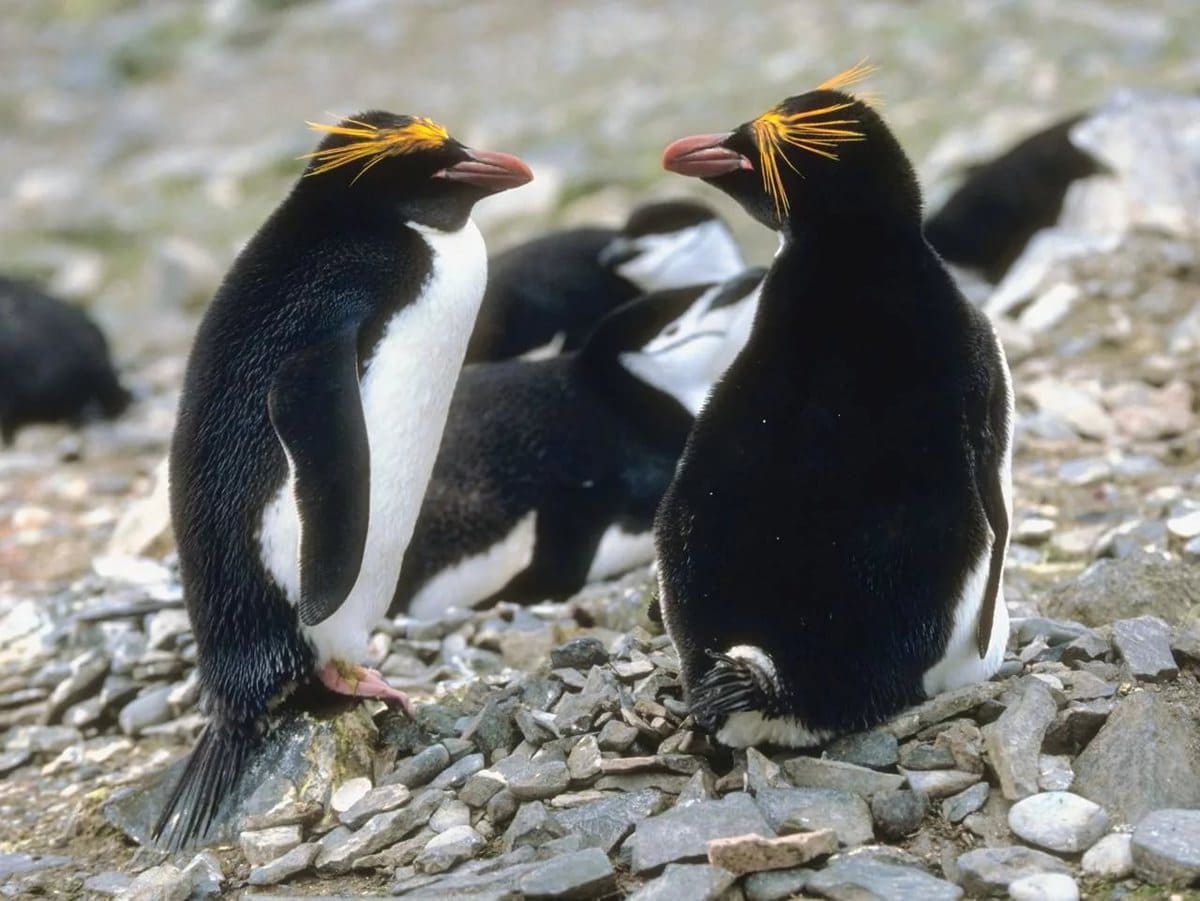
The golden-haired (also called “crested” or “rocky”) penguin has an interesting feature in appearance (by the way, thanks to which it got its name) – it has a bright crest of a characteristic shade on its head. In addition, the golden-haired penguin also has attractive yellow-colored eyebrows ending in a tassel, and black feathers on the crown.
These perky animals can compete with other species with their external data. In addition, in terms of study, they are very funny and interesting creatures. The crested penguin is considered the most attractive and common among other species..
3. Papuan penguins are the fastest
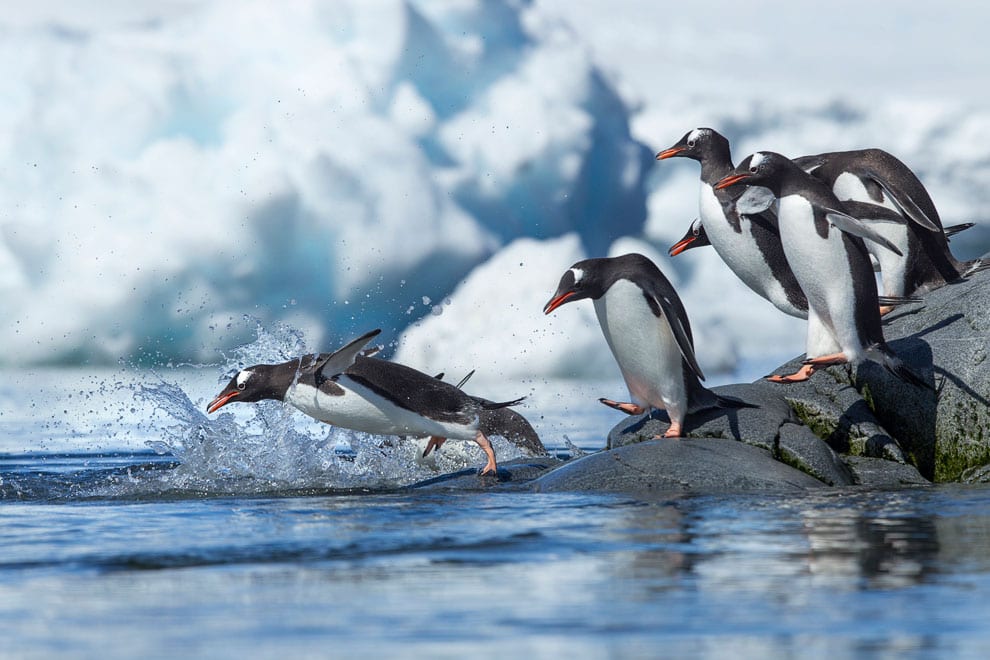
Penguins are known to be very nimble in the water. Papuan (aka “Subantarctic”) is considered the largest, but only after the royal and imperial. In addition, it is also the fastest! Being under water, it develops speed up to 36 km/h.
However, the larger the penguin, the lower its speed due to the increasing resistance of the water column. For example, royal or antarctic swim at a speed of 8,5 km / h. Sometimes this penguin is also called “brush-tailed”, because its tail consists of a large number of feathers.
2. Polar penguins are the most frost-resistant
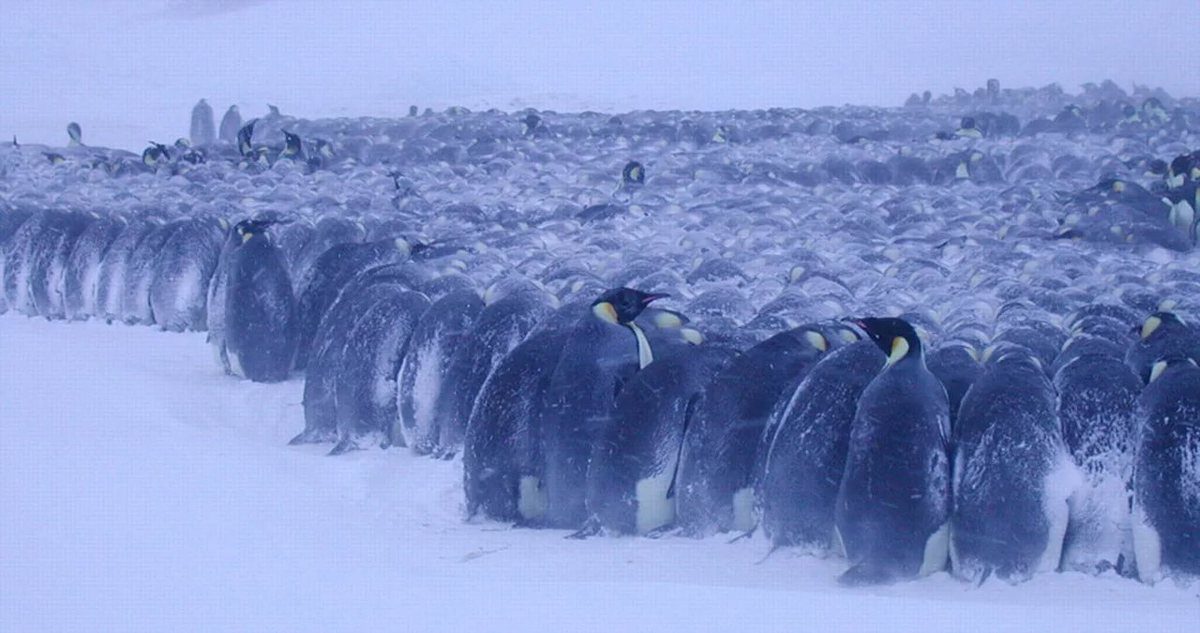
Penguins are very hardy marine animals. Special plumage and a fairly thick fat layer do not allow these wonderful creatures to freeze.
So, the king penguin, for example, can withstand temperatures down to -60°C, and penguins that live in the South Pole (where their vast majority are located) live in conditions of low temperatures, reaching up to -80°C. They huddle together to keep warm. Interestingly, in this way, in flocks, the temperature reaches + 30°C! Polar penguins are the most frost-resistant.
1. Emperor penguins are the largest
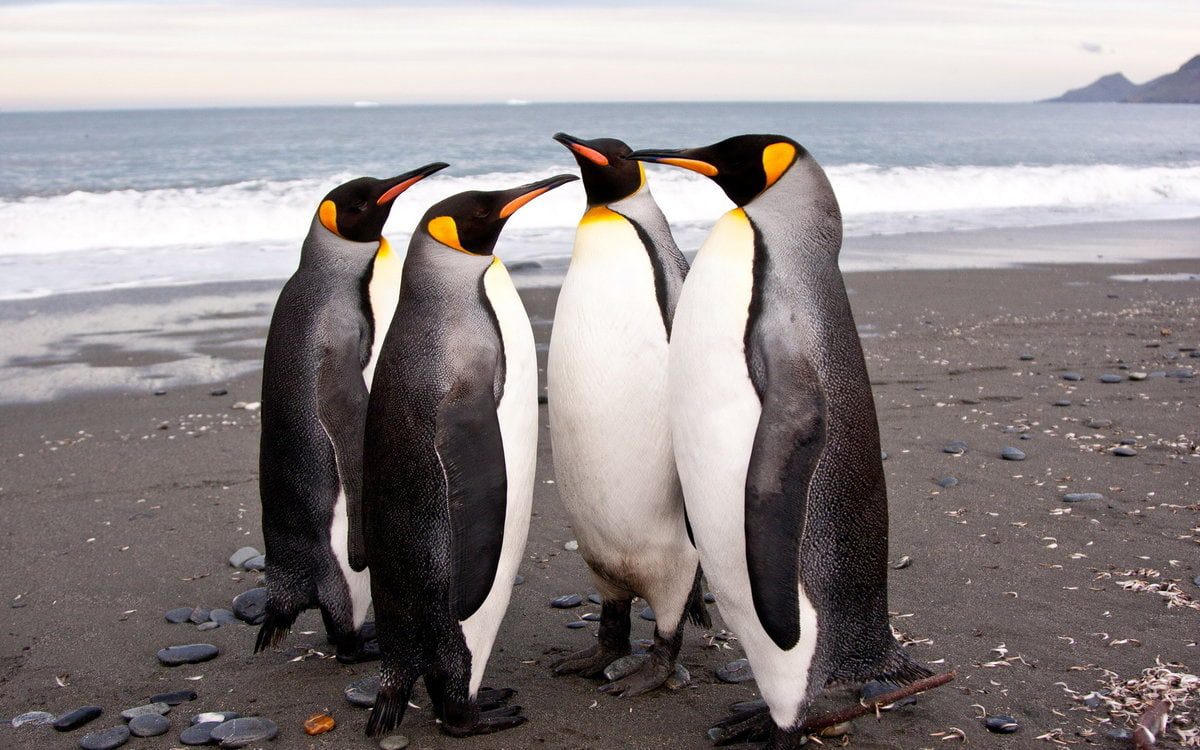
Representatives of the Penguins are distinguished by their beauty, dexterity, and interesting features. We know about many types of penguins, and also from the article we already understood that imperial – the largest species. When it stretches to its full height, its height is 1,1 meters, it happens that males cross this digital line, reaching 1,3 meters.
The average weight of the emperor penguin is 36,7 kg, but the females weigh a little less – 28,4 kg. The emperor penguin is the largest and oldest bird, which is interesting – in translation from ancient Greek, their name means “wingless diver”. They dive really deep and feel comfortable in the water.



